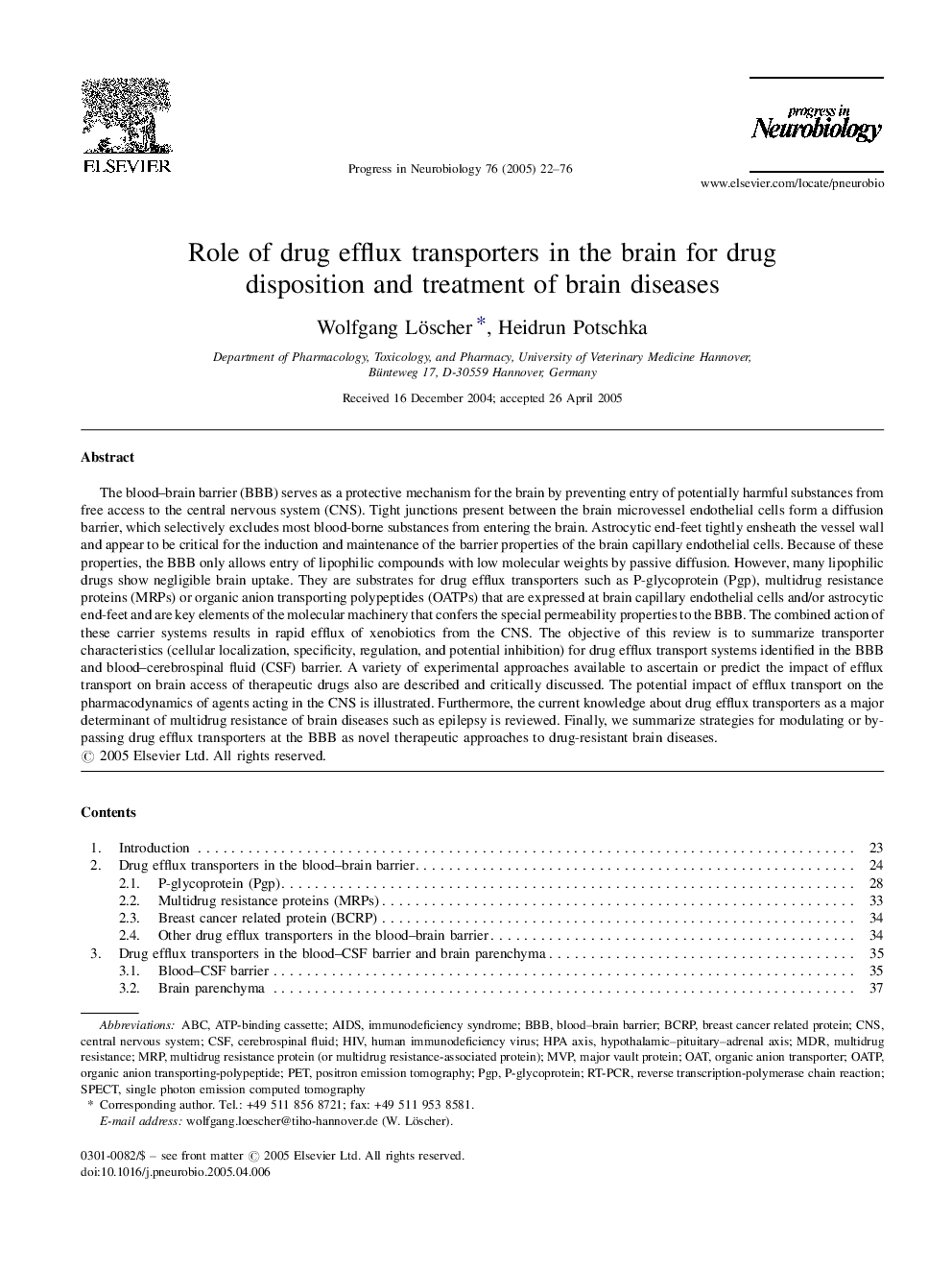| کد مقاله | کد نشریه | سال انتشار | مقاله انگلیسی | نسخه تمام متن |
|---|---|---|---|---|
| 9435179 | 1298568 | 2005 | 55 صفحه PDF | دانلود رایگان |
عنوان انگلیسی مقاله ISI
Role of drug efflux transporters in the brain for drug disposition and treatment of brain diseases
دانلود مقاله + سفارش ترجمه
دانلود مقاله ISI انگلیسی
رایگان برای ایرانیان
کلمات کلیدی
RT-PCROATPMVPMDRBcrpPGPMRPABCP-glycoprotein - P-گلیکوپروتئینAIDS - ایدزSPECT - برشنگاری رایانهای تک فوتونی، مقطع نگاری رایانهای تک فوتونی، توموگرافی رایانهای تک فوتونی، اسپکتsingle photon emission computed tomography - توموگرافی کامپیوتری انتشار اتمی فوتونPositron emission tomography - توموگرافی گسیل پوزیترونOat - جو دو سرorganic anion transporter - حمل کننده آنیون آلیCNS - دستگاه عصبی مرکزیBBB - سد خونی مغزیBlood–brain barrier - سد خونی مغزیcentral nervous system - سیستم عصبی مرکزیCSF - مایع مغزی نخاعیCerebrospinal fluid - مایع مغزی نخاعیhypothalamic–pituitary–adrenal axis - محور هیپوتالاموس-هیپوفیز-آدرنالHPA axis - محور هیپوتالاموس-هیپوفیز-آدرنالMultidrug resistance - مقاومت چند داروییreverse transcription-polymerase chain reaction - واکنش زنجیره ای رونویسی-پلیمراز معکوسhuman immunodeficiency virus - ویروس نقص ایمنی انسانیHIV - ویروس نقص ایمنی انسانی PET - پتmajor vault protein - پروتئین غار عمدهATP-binding cassette - کیت اتصال به ATP
موضوعات مرتبط
علوم زیستی و بیوفناوری
علم عصب شناسی
علوم اعصاب (عمومی)
پیش نمایش صفحه اول مقاله

چکیده انگلیسی
The blood-brain barrier (BBB) serves as a protective mechanism for the brain by preventing entry of potentially harmful substances from free access to the central nervous system (CNS). Tight junctions present between the brain microvessel endothelial cells form a diffusion barrier, which selectively excludes most blood-borne substances from entering the brain. Astrocytic end-feet tightly ensheath the vessel wall and appear to be critical for the induction and maintenance of the barrier properties of the brain capillary endothelial cells. Because of these properties, the BBB only allows entry of lipophilic compounds with low molecular weights by passive diffusion. However, many lipophilic drugs show negligible brain uptake. They are substrates for drug efflux transporters such as P-glycoprotein (Pgp), multidrug resistance proteins (MRPs) or organic anion transporting polypeptides (OATPs) that are expressed at brain capillary endothelial cells and/or astrocytic end-feet and are key elements of the molecular machinery that confers the special permeability properties to the BBB. The combined action of these carrier systems results in rapid efflux of xenobiotics from the CNS. The objective of this review is to summarize transporter characteristics (cellular localization, specificity, regulation, and potential inhibition) for drug efflux transport systems identified in the BBB and blood-cerebrospinal fluid (CSF) barrier. A variety of experimental approaches available to ascertain or predict the impact of efflux transport on brain access of therapeutic drugs also are described and critically discussed. The potential impact of efflux transport on the pharmacodynamics of agents acting in the CNS is illustrated. Furthermore, the current knowledge about drug efflux transporters as a major determinant of multidrug resistance of brain diseases such as epilepsy is reviewed. Finally, we summarize strategies for modulating or by-passing drug efflux transporters at the BBB as novel therapeutic approaches to drug-resistant brain diseases.
ناشر
Database: Elsevier - ScienceDirect (ساینس دایرکت)
Journal: Progress in Neurobiology - Volume 76, Issue 1, May 2005, Pages 22-76
Journal: Progress in Neurobiology - Volume 76, Issue 1, May 2005, Pages 22-76
نویسندگان
Wolfgang Löscher, Heidrun Potschka,